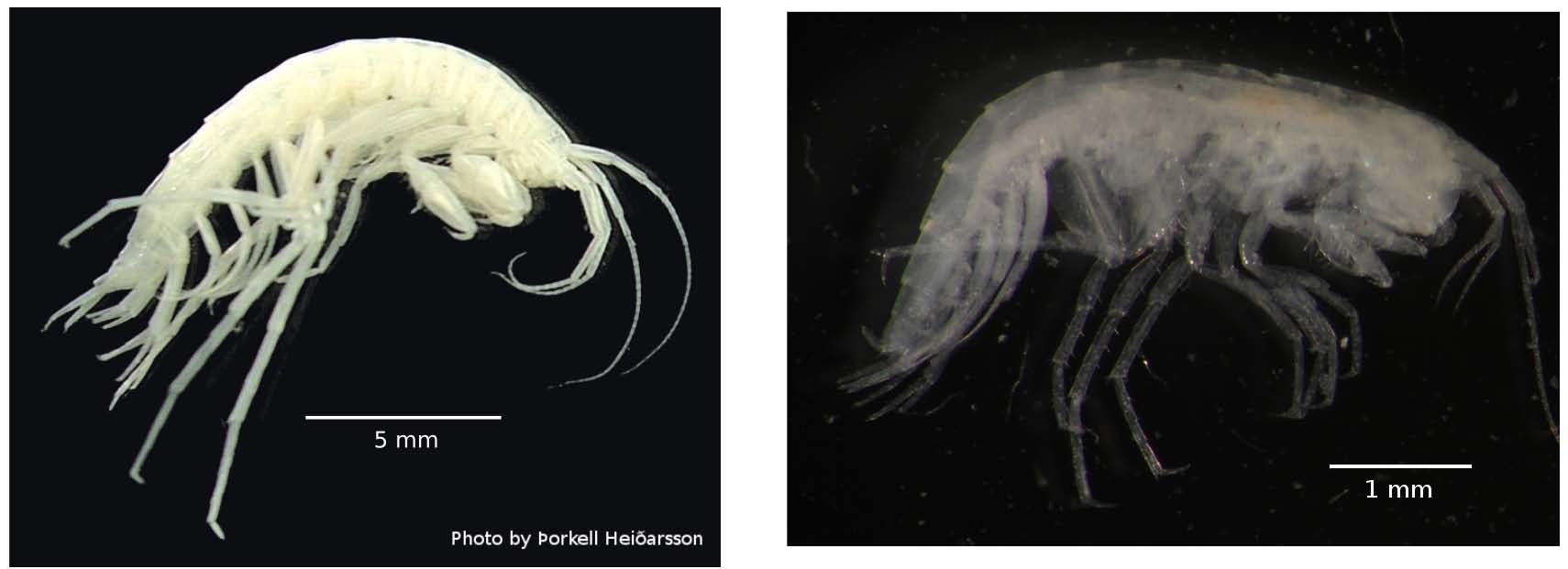Between Fire and Ice: How Amphipods species endemic to Iceland colonized and survived glaciations.

Crymostygius thingvallensis and Crangonyx islandicus are two endemic species of groundwater amphipods which were recently discovered in Iceland. C. thingvallensis is uncommon, but represents a new monotypic family Crymostygidae. C. islandicus is widespread in the geologically youngest parts of the island and belongs to a genus which is widely distributed in North America and Eurasia. Both species belong to the superfamily Cran¬gonyctoidea, exclusively composed of freshwater species. Iceland is geographically isolated and was fully covered by an ice sheet during the last glacial maximum, 21.000 years ago, hence the Icelandic biota is characterized by extremely low endemism and low species diversity. Thus, the discovery of these two endemic freshwater species, on an island isolated in the midst of the Atlantic Ocean raised questions about their colonization and their survival during the glacial periods of the Ice age. Subglacial refugia have been hypothesized to explain the occurrence of these two amphipods in Iceland which might have colonized the country via an ancient land bridge, now submerged, connecting Iceland and Greenland. In this thesis, molecular and morphological markers were used to test this hypothesis. In addition, cryptic diversity, common in groundwater species, was assessed with mitochondrial and nuclear markers. Finally, the variation in secondary structure of the nuclear ITS regions has been characterized and its influence on the phylogeny reconstruction evaluated. The mitochondrial markers (COI and 16S) support that C. islandicus populations diverged within the island for up to five million years and consequently they survived repeated glaciations in Iceland in subglacial refugia. The nuclear marker ITS1 is supporting, though weakly, the phylogeographic pattern observed with the mitochondrial markers. Though the populations of C. islandicus showed high genetic divergence, deferent species delimitation methods led to deferent conclusions about the potential species complex status of C. islandicus. The taxonomic status of both Icelandic species is supported by phylogenies based on nuclear markers (18S, 28S, 5.8S, ITS1 and ITS2). These phylogenies show high divergence between Crangonyx species from Eurasia and from North America. C. islandi¬cus is more closely related genetically to Crangonyx species from North America, supporting the hypothesis of a colonization via Greenland. Morphological data led to a deferent pattern, C. islandicus clustering with species both from North America and Europe which might be due to convergent evolution in morphological traits. In addition, nuclear phylogenies show that Crangonyx, Synurella and Stygobromus genera are polyphyletic and might need taxonomic revision to restore their monophyly. The secondary structures of the ITS2 for Cran-gonyctoidea species are highly divergent from the common structure described for Metazoans and appeared to have little impact on the phylogenetic reconstruction.
Conferència a càrrec del Dr. Etienne Kornobis.
Museo Nacional de Ciencias Naturales (CSIC), Madrid.
Dimars 13 de novembre a les 13h.
Aula de Graus de la Facultat de Biologia.
Conferència a càrrec del Dr. Etienne Kornobis.
Museo Nacional de Ciencias Naturales (CSIC), Madrid.
Dimars 13 de novembre a les 13h.
Aula de Graus de la Facultat de Biologia.